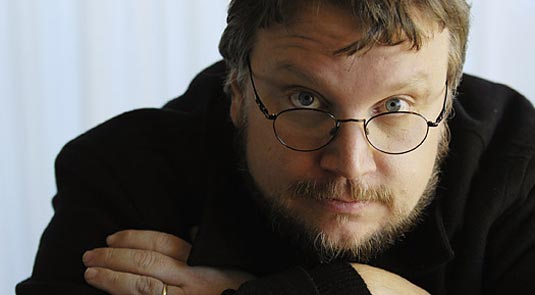 GUILLERMO DEL TORO – DON’T BE AFRAID OF THE DARK
GUILLERMO DEL TORO – DON’T BE AFRAID OF THE DARK
In cinemas October 7th
What are your memories of the 1973 TV movie you’ve based this on, and why did it have such an impact on you?
What was really scary about the original is that it was the first time I saw unstoppable, fierce little creatures. Normally as a kid, you’re afraid of dragons or giant monsters; you’re used to power and menace coming from size. But it was so much more scary and perverse in a way to see how terrifying the little creatures were. Also, the design of the creatures made no sense whatsoever – the hair and the wrinkles – but for some reason, as silly as it was, the fact that it made no sense made you kind of assume, “They must be real!” For a child’s mind, it made perfect sense that these creatures would be that way. And because of the severity of their faces and their pale wrinkled nature, it was creepy because you knew they were intelligent, you knew they were capable of strategy. It was not brute force, it was how smart these things were.
So it freaked the young Guillermo del Toro out, then?
Absolutely. I’ve rarely been so scared and thrilled. There are probably 20 movies that really scare me in my whole life and a lot of those were TV movies. In Mexico, we had all the glory days of the American horror TV series like Night Gallery and the Dan Curtis movies – The Night Stalker, The Night Strangler, The Norliss Tapes… In Guadalajara where I lived, these movies played late at night and, fortunately, I had neglectful enough parents that you could watch them without them telling you not to.
Your main protagonist is a 10-year-old girl who goes through an awful ordeal. What were your intentions in regards to young Sally, played by Bailee Madison?
What I wanted was a duel of wits. Sally is a really resourceful girl. She is smart, she is articulate, she is not overwhelmed physically until the ending. It’s a match of wits and my main concern was to make Bailee’s and Katie [Holmes]’s characters active, not make them victims. Sally is a tough little cookie.
Are there issues in terms of what you can show happening to a child on screen?
I suppose there are but we were not a movie trying to push the boundaries of good taste or social standards; we were interested in being a really good, solid gothic thrill-ride so that wasn’t a concern. And not to spoil it for the audience but in the test screenings, people were really shocked by the fact that we have a very strong character meet a horrible fate at the end. But that is something that also impressed me very much in the original movie. Part of horror is not being fair and these days the endings of horror movies are often fair: the hero survives, the monster has been destroyed, everything is fine… I’m not a believer in that type of ending. I’m more interested in the ending where evil is alive and this or that character has suffered a horrible fate.
You usually create monsters with make-up but Don’t Be Afraid Of The Dark’s critters were done with VFX. Why?
Whenever something is too big or too small you have to go CG. The only other solution we contemplated was to create oversized sets and have people in suits, but we were not that size of budget. I tried to do as much practical as possible and I was very careful during post-production to add in some little things that made them look real. For example, we have a very short focus depth so that it seems like you’re photographing something small. And we were very careful with the physics. In the visual effects, I made them make mistakes, like having them lose their footing on the floor. We piled up a lot of little details to make them real.
Were you involved in their design?
I cannot take any credit on that; that was the director, Troy Nixey. All we decided together was let’s be close to the design they had in the original TV movie, which was hairy bodies and dried, prune-like faces – but also let’s change it. Troy worked with two artists, Keith Thompson and Chet Zar, and the three of them worked at Bleak House, the office I have in my home. I went at the beginning of the day and at the end of the day and one day it was there.
Katie Holmes has taken a lot of flak in recent years for bringing too much celebrity baggage with her to really engage audiences. Did you have any doubts when casting her?
No, totally the opposite. I think that beyond the public celebrity, people should remember what a great actress she is. When you think about her start, when she was doing Go or Pieces Of April, she is such a solid actress. And she’s so relatable, I find her incredibly likeable. The rest I frankly didn’t notice… For us, the name was incredibly important, that it conjured somebody who was a solid actor. People talk about the special effects being the most important thing with these movies, but the most important thing is the actors because without them, the reality of the situation doesn’t matter. We always wanted Katie, we always wanted Guy Pearce and when they responded it was the opposite – we felt blessed. A lot of actors consider a horror movie a B movie but, if done right, they are great vehicles for actors. Mia Farrow in Rosemary’s Baby, Nicole Kidman in The Others, you name it…
Did you set out to avoid horror-movie cliches?
We made very conscious decisions to avoid certain things. Normally people refer to actresses in horror movies as scream queens but we made it a point that Katie’s character should essentially not be afraid. All the way until the end, she is completely fearless, whereas the most immature character in the movie is the male character played by Guy Pearce. Bailee [Madison] is the smartest character in that she figures out everything early and says, “I’m going.” Because always in these movies, you say, “Why don’t they leave?” And she leaves – literally – although she’s 10 so they bring her back. We also avoided big scenes where the characters sit down and explain each other. You know Bailee’s life with her mother from the two phone calls she makes: one where the mother doesn’t pick up and the other where the mother is more worried about the sashimi at a party than she is about her daughter. We don’t need to go, “She was a bad mother.”
Why do you like putting young girls at the heart of scary films?
If you see Devil’s Backbone, it’s the boys that are the central characters. But what I think is important is that I’m very intrigued by the relationship between fairytales and horror. As an artist, as a narrator, I’ve been fascinated by that link since I was a teenager. I was saying how the Grimm’s Fairy Tales are so close to horror tales, and how you need a pure point of view to transit from one world to the next. In some fairytales or in early horror films, it was sort of princesses or the characters of Alice in Wonderland and Wizard Of Oz. What I don’t do – as you can see from every movie I’ve produced or directed – is write female victim characters. I avoid it carefully, not only because I find it boring but also because I find it objectionable.
There’s a rumour you’re involved in Disney’s Maleficent, which will tell the tale of the wicked villainess from Sleeping Beauty. Is that still happening?
No, I’m not. But I love the Disney female villains. I’m fascinated by them. But it’s always better to not have a weak character. If you see the original Don’t Be Afraid Of The Dark, the character of Sally is a victim of everyone: her husband, the creatures… whereas if you see the character of the girl in Pan’s Labyrinth, although she’s living under the captain, she’s not a victim. She stands up to him, she makes him angry, she doesn’t obey him.
Hollywood’s very fond of remakes these days. Were their pitfalls to avoid?
Remakes are a) intrinsically not bad and b) not a modern phenomenon. I think they’re horrible when they come out of mercantilistic, economical calculation – a studio saying, “We have a title, we’re going to relaunch it to make money. End of story… Who is the filmmaker? Doesn’t matter.” But Cronenberg remade The Fly, and made it better than the original, which was already good; John Carpenter’s The Thing is one of the greatest horror movies ever made. If the remake comes from a director, a writer, a producer having a genuine new take on an old piece of material, then there is not such a genuine concern. It’s important to come from a pure place with them.
You were in Wellington, New Zealand developing The Hobbit while the film was shooting in Melbourne. Did you situate the shoot in Australia to have easy access?
That was the main driver. I was ultimately on the set of this movie for 85, 90% of the time and if we had shot it anywhere else, I couldn’t have been there. This is a movie I’ve been pursuing for years, it’s a true labour of love and I wanted to be close. And Peter Jackson was super-nice about it. He gave me the greenlight to go whenever I wanted. It was very easy for me.
The creatures sometimes resembled an army of mini-Gollums. Do you think that, unconsciously, a little bit of Peter Jackson’s influence was rubbing off on the film?
No. We actually were very inspired by rats, with the texture, the look and the way they skitter, the way their feet kind of slide on the floor. The movie became a real balancing act because the post-production travelled with me, to New Zealand, to LA, back to Melbourne, because I wanted to follow the whole process very closely.
Can you explain why the creatures are so hungry for children’s teeth?
They feed on the bones and the teeth. They need calcium and if you notice, their bones are malnourished and twisted and sort of arthritic. So they crave this almost like a treat. They don’t have to eat the bones, they just love to eat the bones and they are just greedy little bastards. I think it’s great to have the creatures be relentless in their attack. There is no redeeming quality to these little guys!
You’re one of the busiest men in the film industry, and attached to so many different projects. How do you keep track of them all in your head?
A lot of them are not real or they never come to pass. They get announced before they are real deals so it’s not as many as you think. There was an article years ago that said, “Guillermo’s busy until 2015.” I wish! If every deal became a movie, I would have 20 movies under my belt. But the reality is that some of those projects, like Don’t Be Afraid Of The Dark, have been done for 13 years. That’s when the screenplay and the original deal were done. Or Pinocchio, which got announced two years ago but we’ve been at it for six years. So it’s not as crazy as it sounds. It’s tough, I’ll admit – I have no free time. But I don’t like free time. For me, free time is horrible and my family knows it.

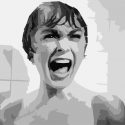
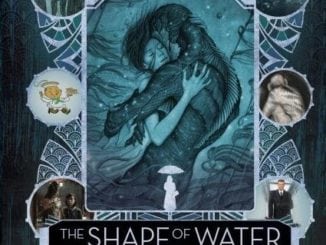
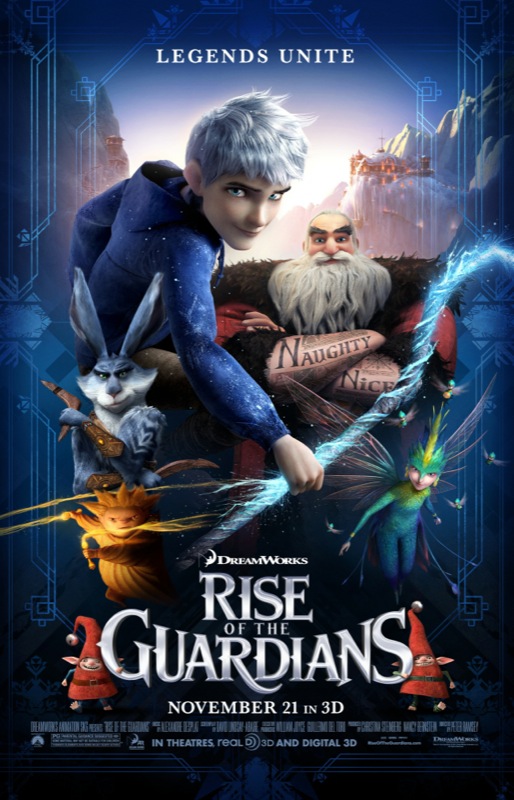
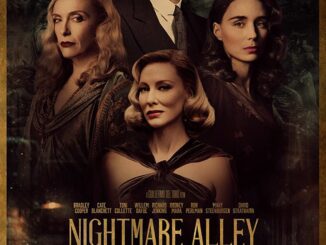
Be the first to comment